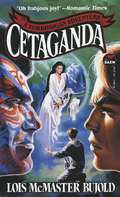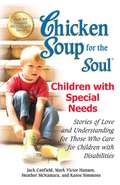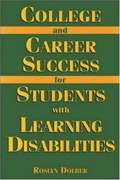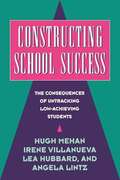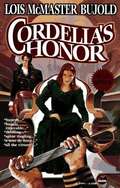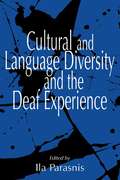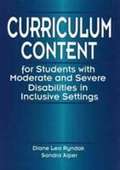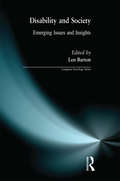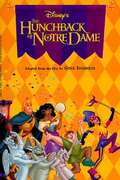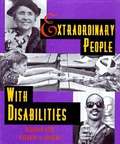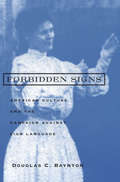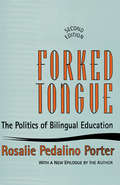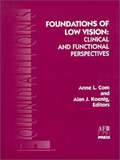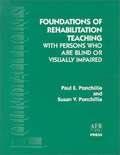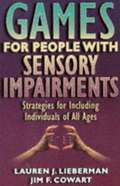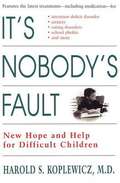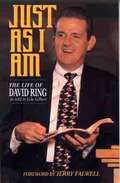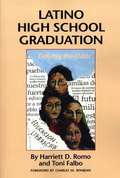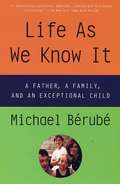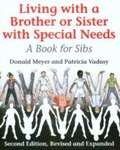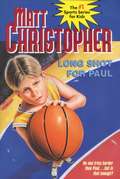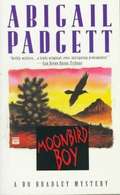- Table View
- List View
Cetaganda (Miles Vorkosigan #9)
by Lois Mcmaster BujoldMiles and his cousin Ivan attend a Cetagandan state funeral and are caught up in Cetagandan internal politics.
Chicken Soup for the Soul Children with Special Needs
by Jack Canfield Mark Victor Hansen Heather Mcnamara Karen SimmonsRaising a child with special needs is a lifelong commitment that is as unique as each person who embarks on it. Written by a variety of authors who share in this distinctive relationship, Chicken Soup for the Soul Children with Special Needs offers a glimpse into the lives of others who are on a similar path. These stories provide insight, comfort, and connection with others who have walked this powerful and transformational journey. The authors of these candid stories relate their own experiences of adjusting, reaching out, and flourishing and share their universal worries, their tears, and the laughter that come with this extraordinary relationship. Most important, through these stories, you will be guided with the wisdom of fellow parents, caregivers, and those with special needs to help you be the very best parent or caregiver you can be.
Chicken Soup for the Soul Children with Special Needs: Stories of Love and Understanding for Those Who Care for Children with Disabilities
by Jack Canfield Mark Victor Hansen Heather Mcnamara Karen SimmonsRaising a child with special needs is a lifelong commitment that is as unique as each person who embarks on it. Written by a variety of authors who share in this distinctive relationship, Chicken Soup for the Soul Children with Special Needs offers a glimpse into the lives of others who are on a similar path. These stories provide insight, comfort, and connection with others who have walked this powerful and transformational journey. The authors of these candid stories relate their own experiences of adjusting, reaching out, and flourishing and share their universal worries, their tears, and the laughter that come with this extraordinary relationship. Most important, through these stories, you will be guided with the wisdom of fellow parents, caregivers, and those with special needs to help you be the very best parent or caregiver you can be.
College and Career Success for Students with Learning Disabilities
by Roslyn DolberThis book offers advice for choosing a college and getting accepted, facing the challenges of coursework, and assessing job options.
Constructing School Success: The Consequences of Untracking Low Achieving Students
by Angela Lintz Lea Hubbard Irene Villanueva Hugh MehanBolstering the academic success of low achieving students and providing a more egalitarian classroom setting are two constant challenges to our schools. This book describes the process of "untracking", an educational reform effort that has prepared students from low income, linguistic and ethnic minority backgrounds for college. Untracking offers all students the same academically-demanding curriculum while varying the amount of institutional support they receive. This book is a highly readable account of a successful school reform effort. It provides systematic research results concerning the educational and social consequences of untracking previously low achieving students, and will be of great importance to researchers in educational and social psychology.
Cordelia's Honor (Cordelia Naismith Omnibus)
by Lois Mcmaster Bujold2 stories: Shards of Honor, and Barrayar, forming a continuous story of the life of Cordelia Vorkosigan nee Naismith, Miles' mother. Winner of the Hugo Award.
Cultural and Language Diversity and the Deaf Experience
by Ila ParasnisThis edited volume provides a comprehensive analysis of deaf people as a culturally and linguistically distinct minority group within American society. Many educators, linguists, and researchers now favor this position, as opposed to that which states that a deaf person simply has an audiological disability. Contributors to this book include members of the deaf community, as well as prominent deaf and hearing educators and researchers. The text contains three sections, covering research on bilingualism and biculturalism, the impact of cultural and language diversity on the deaf experience, and first-hand accounts from deaf community members that highlight the emotional impact of living in the deaf and hearing worlds.
Curriculum Content for Students with Moderate and Severe Disabilities in Inclusive Settings
by Diane L. Ryndak Sandra K. AlperThis book provides a complete description of a process through which collaborative education teams can identify appropriate functional and general education curriculum content for readers with moderate or severe disabilities who are included in general education settings.
Disability and Society: Emerging Issues and Insights (Longman Sociology Series)
by Len BartonThe study of disability has traditionally been influenced mainly by medical and psychological models. The aim of this new text, Disability and Society, is to open up the debate by introducing alternative perspectives reflecting the increasing sociological interest in this important topic.Disability and Society brings together for the first time some of the most recent original research in this rapidly expanding area. The contributors, both disabled and non-disabled, are all leading thinkers in their field and suggest new ways of understanding disability, developing policy and challenging current practice.
Disney's The Hunchback of Notre Dame (Junior Novelization)
by Gina IngogliaSet in the picturesque Parisian streets of the fifteenth century, this adventure centers on Quasimodo, the gentle and lonely hunchbacked bell-ringer confined to the tower of the Notre Dame cathedral. Quasimodo finds a friend in the gypsy Esmeralda.
Extraordinary People with Disabilities
by Deborah Kent Kathryn A. QuinlanThis book tells the stories of 54 historical figures with disabilities. From people who were known for their disability like Helen Keller, Stevie Wonder and Heather Whitestone to people who made an impact on the world and not just amongst the disabled community, like FDR, Harriet Tubman and Thomas Edison. In addition to the biographies there are short histories of legislation that changed history for Americans with Disabilities.
Eyes of a Stranger
by Sharon E. HeiselMarissa, a shy self-conscious girl with a twisted leg, is attracted to a strikingly handsome visitor to her uncle's carousel but begins to suspect that he is a psychotic serial killer.
Forbidden Signs: American Culture And The Campaign Against Sign Language
by Douglas C. BayntonForbidden Signs explores American culture from the mid-nineteenth century to 1920 through the lens of one striking episode: the campaign led by Alexander Graham Bell and other prominent Americans to suppress the use of sign language among deaf people.<P><P> The ensuing debate over sign language invoked such fundamental questions as what distinguished Americans from non-Americans, civilized people from "savages," humans from animals, men from women, the natural from the unnatural, and the normal from the abnormal. An advocate of the return to sign language, Baynton found that although the grounds of the debate have shifted, educators still base decisions on many of the same metaphors and images that led to the misguided efforts to eradicate sign language.
Forked Tongue: The Politics of Bilingual Education
by Rosalie PorterToday children who are not fluent in English—legal and illegal immigrants, refugees, and native born—are the fastest growing portion of our population, accounting for more than half the children in classrooms in many city schools. Bilingual education programs established by federal and state laws have required that such students be taught basic subjects in their native languages rather than in English. Judged by most applicable measures—such as achievement scores and dropout rates—these programs have not been successful.This edition includes new material on recent efforts to reform bilingual education, on the growing trend across the country toward English language programs, on the latest national research studies, and on the movement to make English the official language of the United States. Forked Tongue is a devastating inside account of how the twenty-eight-year experiment in bilingual education has failed our language-minority children—and why. Rosalie Porter draws on local, state, and international experience to provide us with the first authoritative account of which policies, programs, and practices actually succeed with the children they are intended to serve. Forked Tongue will be of interest to educators, sociologists, and scholars interested in second language acquisition.
Foundations of Low Vision: Clinical and Functional Perspectives
by Alan J. Koenig Anne L. CornThis text explains in great detail how to do low vision exams, the principles behind magnifiers and other forms of magnification, and much more.
Foundations of Rehabilitation: Teaching with Persons Who Are Blind or Visually Impaired
by Paul E. Ponchillia Susan V. PonchilliaThe first comprehensive textbook on rehabilitation teaching with people who are blind or visually impaired, this book provides practical information and specific instructional strategies as well as an overview of the profession, its history and development, and management of a rehabilitation teaching caseload. Written by two experienced teachers and prominent educators, this volume includes chapters on low vision skills, communication skills, and daily living skills, including food preparation, personal management, home management, and leisure and recreation, presenting proven techniques and detailed, step-by-step lesson plans for specific skills in each area. Information is offered on the needs of adult learners and individuals with adventitious or congenital visual impairments, along with valuable sample forms for assessing and planning the needs and course of instruction for new clients.
Games for People with Sensory Impairments
by Lauren J. Lieberman Jim F. Cowart"This unique and valuable collection of games and activities, developed by innovative practitioners, fills a long - standing need for a book about teaching student with sensory impairments accompanied by multiple disabilities. I recommend this book highly for use in both inclusive and segregated settings." Diane H. Craft, PhD Professor, Department of Physical Education SUNY Cortland College, NY
It's Nobody's Fault: New Hope and Help for Difficult Children and Their Parents
by Harold S. KoplewiczA guide for parents of troubled children provides compassionate advice on the diagnosis, treatment, and prognosis for thirteen psychological disorders, including ADD, depression, and anxiety, dispelling myths about medication and other available treatments.
Just As I Am, The Life of David Ring
by Lela Gilbert David Ring"For those who do not believe in miracles, this book is must reading. For those who do believe in miracles, it will be a confirming blessing. I commend it with joy" Adrian Rogers, Pastor, Bellevue Baptist Church
Latino High School Graduation: Defying the Odds
by Harriett D. Romo Toni FalboWhile high school drop-out rates have steadily declined among white and African American students over the last twenty years, a constant 35 percent of Latino students continue to quit school before graduation. In this pioneering work, Harriett Romo and Toni Falbo reveal how a group of at-risk Latino students defied the odds and earned a high school diploma. Romo and Falbo tracked the progress of 100 students in Austin, Texas, from 1989 to 1993. Drawing on interviews with the students and their parents, school records, and fieldwork in the schools and communities, the authors identify both the obstacles that caused many students to drop out and the successful strategies that other students and their parents pursued to ensure high school graduation. The authors conclude with seven far-reaching recommendations for changes in the public schools. Sure to provoke debate among all school constituencies, this book will be required reading for school administrators, teachers, parents, legislators, and community leaders.
Life As We Know It: A Father, a Family, and an Exceptional Child
by Michael BerubeJamie was born with Down syndrome. He was immediately subject to the medical procedures, insurance and representations as our society designates him as disabled. This book describes not only the challenges of raising him but the challenge of seeing him as a person.
Living with a Brother or Sister with Special Needs: A Book for Sibs
by Donald J. Meyer Patricia VadasyLiving with a Brother or Sister with Special Needs focuses on the intensity of emotions that brothers and sisters experience when they have a sibling with special needs, and the hard questions they ask: What caused my sibling's disability? Could my own child have a disability as well? What will happen to my brother or sister if my parents die? Written for young readers, the book discusses specific disabilities in easy to understand terms. It talks about the good and not-so-good parts of having a brother or sister who has special needs, and offers suggestions for how to make life easier for everyone in the family. The book is a wonderful resource, not just for siblings and their parents but also for teachers and other professionals who work with children with special needs. This revised and updated edition includes new sections on attention deficit hyperactivity disorder, fetal alcohol syndrome, fragile X syndrome, traumatic brain injuries, ultrasound, speech therapy, recent legislation on disabilities, and an extensive bibliography.
Long Shot for Paul
by Matthew F ChristopherGlen is determined to make his developmentally disabled brother a basketball player.
Love on a Leash
by Liz PalikaFrom the Book jacket: Can my dog do therapy work? * Who can train a therapy dog? What does the owner need to know? How can my dog become certified? What problems am I likely to encounter? *Should our facility have its own resident therapy pet? If you have been asking some of these questions, Love On A Leash is the book for you! Liz Palika is an expert on dogs, training, and therapy work. 'Through her efforts thousands of people have been touched with canine affection. Now she shares that experience. Love on a Leash gives you all the tips, methods, and techniques for choosing, training, and working with a therapy dog, as well as telling you how to make your visit a success. You just may discover that you have a four-footed therapist waiting to share miraculous canine love!
Moonbird Boy
by Abigail PadgettWhile battling her own depressive cycle after her old dog dies, Bo stays in a sub-acute facility out on the Kumeyaay reservation. The facility is run by Indians who specialize in this care. While there, Bo meets and become friends with a schizophrenic young man waiting for his meds to stabilize. He is murdered, but his young son, known as Moonbird is still there. Bo leaves the facility and steps back into her CPS investigative role and becomes involved with murders, the Indian culture, medical mega-business and plots within plots. As usual, just when you think you have it figured out, Padgett surprised you again. Many of the prior characters from the series are not present here. However, Estrella is now pregnant, and there is the continuation of the relationship between Bo and Dr. Andrew LaMarche.
